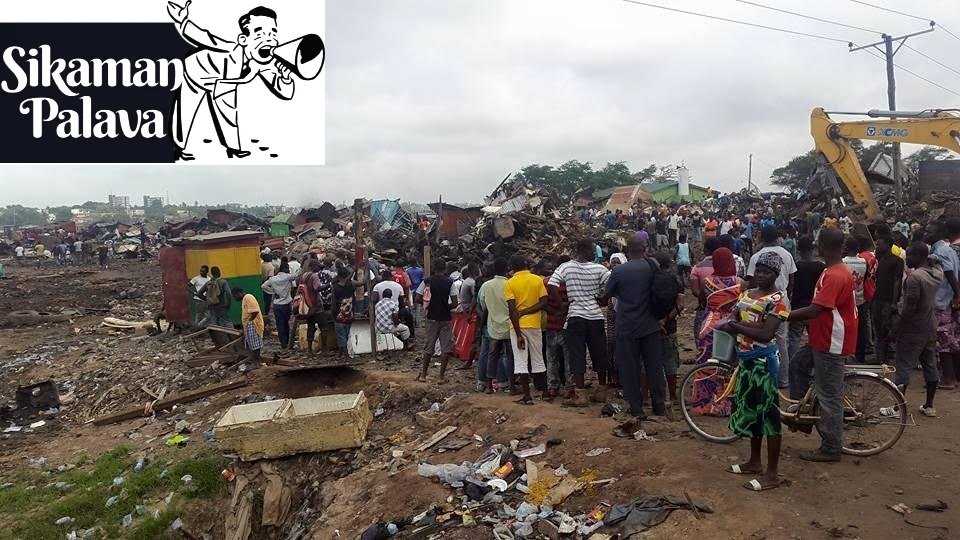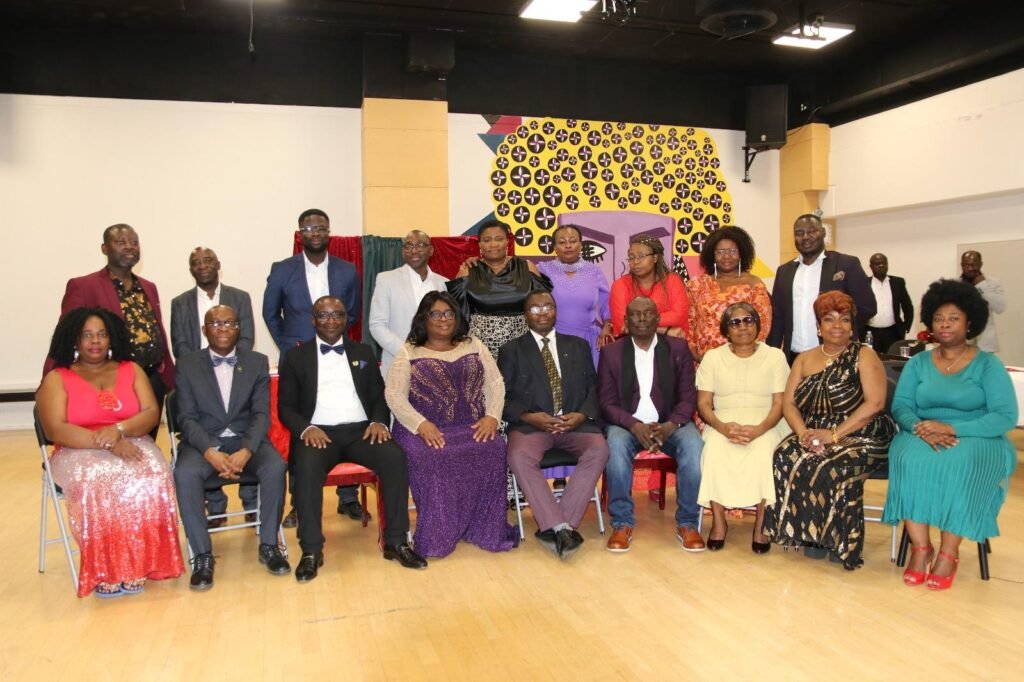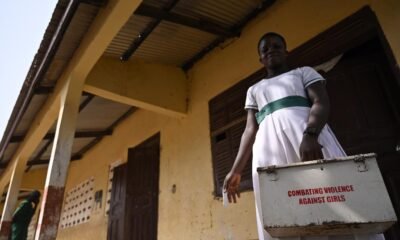Features
Executive madness: A threat to organisational sustainability and global stability
Executive madness, a phenomenon characterised by irrational, erratic, and destructive behaviour among high-level executives, poses a significant threat to organisational sustainability and global stability.
This article provides an in-depth examination of the concept of executive madness, its causes, consequences, and implications for organisations and society.
The concept of executive madness
Executive madness refers to a state of mind where executives exhibit abnormal behaviour, including impulsivity, recklessness, and a disregard for consequences. This phenomenon can manifest in various ways, such as:
1. Hubris and narcissism: An inflated sense of self-importance, leading to impulsive and reckless decision-making.
2. Paranoia and isolation: A sense of siege mentality, causing executives to become isolated and disconnected from reality.
3. Cognitive dissonance: Rationalising or denying the consequences of one’s actions, leading to a disconnection from reality.
Causes of executive madness
Several factors contribute to the development of executive madness, including:
1. Power dynamics: The concentration of power and the lack of accountability can foster an environment conducive to executive madness.
2. Personality traits: Certain personality traits, such as narcissism and Machiavellianism, can increase the likelihood of executive madness.
3. Organisational culture: A culture that values aggression, competition, and short-term gains can contribute to the development of executive madness.
4. Societal pressures: The pressure to meet shareholder expectations, combined with the fear of failure, can create an environment that fosters executive madness.
Consequences of executive madness
The consequences of executive madness can be severe and far-reaching, including:
1. Organisational instability: Executive madness can lead to impulsive decision-making, causing organisational instability and damage to the company’s reputation.
2. Financial ruin: Reckless and impulsive decision-making can result in catastrophic financial losses, damaging not only the organisation but also its stakeholders.
3. Social and environmental harm: Executive madness can lead to decisions that harm the environment, exploit resources, and disregard social welfare.
Case studies: examples of executive madness
Several high-profile cases illustrate the dangers of executive madness:
1. Enron and Jeffrey Skilling: The energy company’s collapse in 2001 was attributed to the reckless and hubristic behavior of its CEO, Jeffrey Skilling.
2. Volkswagen and Martin Winterkorn: The 2015 emissions scandal, which resulted in massive fines and reputational damage, was linked to the autocratic and paranoid leadership style of CEO Martin Winterkorn.
3. Theranos and Elizabeth Holmes: The biotech company’s downfall in 2018 was attributed to the hubris and deception of its CEO, Elizabeth Holmes.
Preventing executive madness
To mitigate the risks of executive madness, organizations can implement several strategies:
1. Governance and oversight: Establishing robust governance structures and oversight mechanisms can help prevent the concentration of power and the erosion of sanity.
2. Leadership development and coaching: Providing leaders with training, coaching, and mentoring can help them develop emotional intelligence, self-awareness, and effective decision-making skills.
3. Culture and values: Fostering a culture of transparency, accountability, and empathy can help prevent the development of executive madness.
Conclusion
Executive madness poses a significant threat to organisational sustainability and global stability. By understanding the causes, consequences, and implications of executive madness, organisations can take proactive steps to prevent this phenomenon and promote more effective, responsible, and sustainable leadership.
By Robert Ekow Grimmond Thompson
Features
The sins of Sodom and Gomorrah

The biblical Sodom and Gomorrah typified sin in its raw, carnal and abominable form.
Sin was widespread and so deep-rooted that the Lord could not find even 10 righteous men in the twin city.
If He found at least 10, Sodom and Gomorrah would have been saved from the blazing fire that turned the entire city into ashes; courtesy of God’s anger and fury.
Sodom and Gomorrah was quite forgotten since the days of Noah until a slum developed in the Odododiodio constituency of the Greater Accra Region of the Republic of Ghana. It was not named Sodom and Gomorrah out of whim. Some say it is the cradle of sin, another birthplace of the seeds of transgression.
Others beg to differ
Whatever it is, in modern-day Sodom, both the good and the bad co-exist. There are good, righteous, hardworking fellows earning a decent living but have to pass each night in Sodom because foxes have holes and birds have nests but the son of man has nowhere to lay his head.
In Sodom and Gomorrah today, you’d find civil servants, reverend ministers, businessmen, aspiring politicians, technocrats, polytechnic students and managing directors. You’ll also find robbers, prostitutes, graded pimps, sodomists, small-time pickpockets, magicians, boxers and kpalogo dancers. So you’ll find both good and bad people.
History has always repeated itself. The current Sodom and Gomorrah was burnt down recently but not completely. Certainly, more than 10 righteous folks were found there. So some areas were spared.
The problem now is that, there are plans to resettle residents of the infamous twin city, and one of the reasons is that, the place is so filthy and disease-ridden so much that the continued human existence is deemed not in the interest of anybody.
A new settlement is what the government sees as ideal for these people, more so when the name Sodom and Gomorrah is nothing complimentary as a name.
The residents, however, say that they love the place. Their hearts and souls are enshrined in Sodom and Gomorrah, so they won’t move, bulldozer or not.
The situation recalls the one similar to the people of Tema Mahean who lived at the site where Meridian Hotel is located. To get the site for the hotel, the Nkrumah government had to resettle the indigenes who were rather unwilling.
A bulldozer was brought in to do the job, and the people still feel bitter about it. Their collective soul was uprooted and of course, they left a curse, as some people say. The Meridian Hotel and its present state, similar to a bomb-ridden edifice, may be a living testimony of the bitterness of the people.
But the difference between the Tema and Sodom variants – the Tema case was that of an ancestral home with its shrine and roots. Sodom and Gomorrah is a slum that has developed over the years, and you’d find people of various nationalities there. They include Burkinabes, Nigeriens, Ivorians. Some are perchers; others appear and disappear as and when they deem fit.
“It would be a mistake for this government to send us away after we’ve voted for Kufuor for positive change”, one resident has said. “We cannot be sent away like animals.
They must give us time to decide. We support the government, so the government must not go against our wishes and make us miserable”.
Another resident I had a chat with said the government should think about places like Ashaiman (pronounced by many ‘Ashiaman’), because the sins of Sodom and Gomorrah are nothing to be compared to the abominations of Ashaiman.
“I’ve stayed at Ashaiman before and I know the difference. In Ashiaman you can find every type of criminal. Sodom and Gomorrah is not a crime haven, as others think. It is a residential area for the poor. And if poverty can be said to be a crime, then we are criminals. Otherwise, we are like anybody else,” he said.
The mention of Ashaiman was intriguing. Ashaiman, also called Hanoi, may be one of the infamous crime cities in West Africa, sharing the infamy with places like Brooklyn, Harlem and Manhattan in the United States.
But those who live in Ashaiman have very favourable comments about the place. They admit that criminals live there. But the good thing about it is that they don’t commit their crimes in Ashaiman. They go out to sin and come back to roost quietly. After all the township is full of poor people you cannot steal from, they contend.
Yeah, Sodom and Gomorrah is once again about to be obliterated from the surface of the earth. Personally, I do not like the name, and it bothers me. At any rate, I believe that if the people are going to be resettled, it should be done benevolently and what should precede it is education.
They must be told why it is necessary to resettle them. And in resettling them, they should be comfortable – electricity, water, playground for the kids and recreational centres, etc. They must leave smiling, not grumbling and leaving curses behind.
This article was first published on Saturday May5, 2001
Features
A focus on Asanteman Finland

Today, I continue my narration of personalities or institutions and their accomplishments as members of the Ghanaian Diaspora in Finland with a focus on the Asanteman Finland association.
The Asanteman association in Finland has chalked significant accomplishments and successes which must be made known to the public.
Formation
Before the current Asanteman Finland association was formed a few years ago, there existed the Asanteman Kuo Finland, which was established in early 2004 and registered at the Patent Registry in Helsinki in 2006.

The idea to form such an association came about following the desire of some Ghanaians from the Asante ethnic group to come together with the aim of supporting each other, and to ensure unity among its members and with others in the Finnish society.
Their first meeting was in the home of Mr Kwabena Nyamaa (nicknamed Blower), who later was appointed as the Abusuapanin (head of family) of the group. Unfortunately, this first group collapsed, but a new association was formed.
Structure and hierarchy
The Asanteman Finland has a unique structure of organisation. It operates the usual structure for organisations but also adopts the traditional Asante/Akan style of hierarchical structure in the same ways as how an Asante/Akan community or society is usually organised in Ghana.
Thus, the Asanteman Finland has a president, secretary, organising secretary, etc., who are each elected and run the day to day affairs of the association as the executive group.
This runs alongside the traditional leadership structure of the Chief, Queen-mother, Kurontihene, Abusuapanin, etc., details of which I will focus in my subsequent descriptions of the leadership structure of the Asanteman association (in terms of both the traditional hierarchy and the more formal, executive body style).
Projects and achievements
The Asanteman association has a number of projects they have engaged in to support people and other groups or institutions. In 2007, the old association donated digital blood pressure monitors to some hospitals in Ghana.
In 2011, the group supported the Akomadan Hospital by renovating part of the hospital’s building with roofing sheets. Also, in 2014 the association supported the Jachie Training Center for physically-challenged people, renovating their facilities. Members also donated hospital equipment to Assin Fosu, Mampongten, Agona Asamang, etc., as well as financial support to a hole-in-heart patient.
The new Asanteman association has also made considerable contributions. In 2021/2022, during the COVID-19 period, the group sent support to Ghana. Again, the association is cooperating with the larger group, Asanteman Europe, and the members are in the process of contributing towards the rehabilitation of the Okomfo Anokye Teaching Hospital in Kumasi, Ghana.
Role in the Ghanaian community in Finland
The Asanteman plays a prominent role in the Ghanaian community in Finland. The association was the first to be formed after the Ghana Union Finland. It is thus a pioneer in that sense of an association representing a Ghanaian ethnic group.
The association helps or gives support to its members who are bereaved as a way to commiserate with them and to help them organise the funeral. They arrange counselling and educative sessions to the youth such as to teach them the adowa dance and other traditional values.
It also engages in conflict resolution in other to maintain unity and peace in the group. The group also mobilises their members for various activities that help in integration efforts. For example, the leaders mobilise the other members, including the women in activities such as cooking together, sharing information and learning things from each other.
The Asanteman also collaborates with the Ghana Union Finland, an association for Ghanaian migrants in Finland whose aims include bringing together all Ghanaian migrants resident in Finland and promoting cultural activities in Finland for better intercultural and multicultural understanding.
Displaying a rich culture
When it comes to displaying part of a Ghanaian culture, the Asanteman is unmatchable, so to speak. Other groups representing the Brong Ahafo, Gadangbe, Mfantseman, Eastern Region, and Nzema all endeavour to portray the culture and values of their ethnic origins, but it can be said that the Asanteman remain the pioneer and tops in showcasing their rich culture of the Asante heritage.

They take a prominent position in enacting a “royal entry” at events organised by the Ghana Union Finland and other groups, where they display colourful kente attire adorned with ornaments, amidst traditional drumming and adowa dance.
Collaborations with other African groups in Finland, alliances abroad
The Asanteman collaborates with groups such as the Igbo association in Finland and other African nationalities at their events, where Asanteman Finland showcases the Asante/Ghanaian culture.
They are a prominent member of the Asanteman Europe, an umbrella association that seeks to bring together all Asanteman associations abroad. Asanteman Finland also collaborates with individual such associations in other European countries. Thank you!
GHANA MATTERS column appears fortnightly. Written in simple, layman’s terms, it concentrates on matters about Ghana and beyond. It focuses on everyday life issues relating to the social, cultural, economic, religious, political, health, sports, youth, gender, etc. It strives to remind us all that Ghana comes first. The column also takes a candid look at the meanings and repercussions of our actions, especially those things we take for granted or even ignore. There are key Ghanaian values we should uphold rather than disregard with impunity. We should not overlook the obvious. We need to search for the hidden or deeply embedded values and try to project them.
With Dr Perpetual Crentsil





